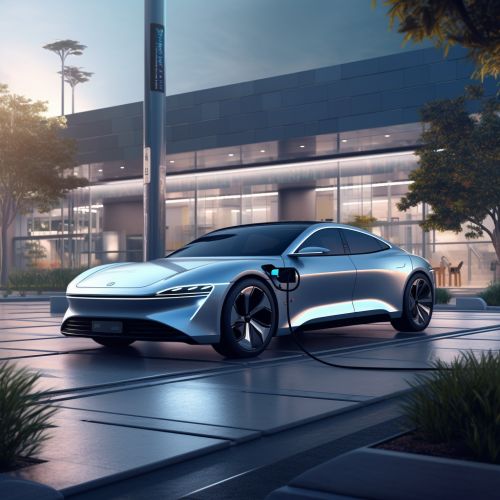Plug-in Hybrid Electric Vehicle
Introduction
A plug-in hybrid electric vehicle (PHEV) is a type of hybrid electric vehicle that uses rechargeable batteries, or another energy storage device, that can be recharged by plugging it in to an external source of electric power. The vehicle typically uses a combination of an internal combustion engine (ICE) and electric motors to power the vehicle.
History
The concept of a plug-in hybrid electric vehicle was first proposed by Professor Andrew Alfonso Frank from the UC Davis. He started developing plug-in hybrid electric vehicles in the late 1960s and has been known as the "father of the plug-in hybrid".
Design and Functionality
A plug-in hybrid electric vehicle operates as a conventional hybrid when the energy stored in the battery is depleted, a point known as the "depletion point". Beyond this point, the vehicle starts to function as a regular hybrid vehicle where the gasoline engine and battery work together to provide the power.
Battery
The battery in a plug-in hybrid electric vehicle is larger than the one in a regular hybrid vehicle. This allows the vehicle to travel further on electric power alone, which can significantly increase fuel efficiency.
Charging
Charging a plug-in hybrid electric vehicle is typically done by plugging the vehicle into a charging station. These stations can be found in a variety of locations, including residential homes, workplaces, and public charging stations.
Efficiency
Plug-in hybrid electric vehicles are more fuel efficient than conventional vehicles. They can typically travel between 10 and 40 miles on electric power alone, depending on the size of the battery and the efficiency of the vehicle.
Environmental Impact
Plug-in hybrid electric vehicles have a lower environmental impact than conventional vehicles. This is because they use less gasoline and produce fewer emissions. However, the environmental impact of the electricity used to charge the vehicle can vary depending on the source of the electricity.
Cost
The cost of a plug-in hybrid electric vehicle can be higher than a conventional vehicle due to the additional cost of the battery and electric motor. However, this cost can be offset by lower fuel costs and potential government incentives.
Future Developments
The future of plug-in hybrid electric vehicles looks promising with advancements in battery technology and the growing infrastructure of charging stations.
See Also
Electric Vehicle Hybrid Vehicle Battery Electric Vehicle Charging Station


